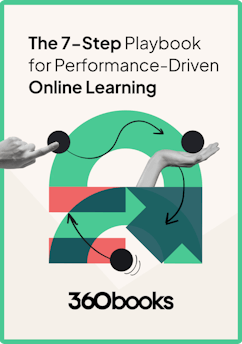Chapter 3: The Real Utility of Online Learning? Closing Meaningful Skills Gaps.
L&D is at a pivotal moment, where skills shortages in the US and Europe are forcing companies to scrutinize the impact of their L&D department based on their ability to upskill and reskill critical teams. Pressures like baby boomer retirement, economic instability, and technological innovations mean that it’s harder than ever to equip employees with the skills they need to deliver on their organization’s priorities.
Indeed, 74% of CEOs are concerned about the availability of key skills, according to a recent PWC report. But when we asked our learners if they found it difficult to acquire all the new skills they need to continue doing their job well, most indicated this wasn’t an area of concern. This is troubling: individuals may feel secure in their skill sets, but hiring managers and leadership teams largely disagree.
Individuals may feel secure in their skill sets, but hiring managers and leadership teams largely disagree.
In this context, it’s crucial for L&D teams to have the tools and processes in place to close skills gaps that are of key concern to their organization and stakeholders. One of those tools is online learning – but again, as we saw above, not all online learning is created equal.
As we’ve written about elsewhere, the most effective way of closing meaningful skill gaps depends on your ability to affect change in your particular work environment. In other words, learning how to operate within the rules and expectations of your organization's company culture.
As we outlined with the “Accounting 101” example, no OTS content, no matter how engaging or detailed, can equip your workforce with the institutional knowledge they need to perform better in their workplace. It’s the difference between offering courses on “Communication,” “Prioritization,” and “Resilience,” and providing content that spells out who in your organization to go to for XYZ request, via email, Slack, or Microsoft Teams, referencing these internal documents, with this background in mind.
Closing proprietary skills gaps – the holes in our knowledge that reference our particular place of work – is the surest way for L&D teams to meaningfully impact their organizations.
L&D professionals lead the way with skills
In the face of skills shortages acknowledged by leadership teams, forward-thinking Learning and Development professionals are perfectly poised to upskill and reskill employees appropriately, matching their desires for career advancement with the high-level needs of the business. With this in mind, it’s clear that delivering online learning at scale that learners find effective is only half the battle.
The other half is tying these initiatives to increased proficiency, improved performance, and deeper, richer internal talent pools
The other half is tying these initiatives to increased proficiency, improved performance, and deeper, richer internal talent pools – all initiatives that prove to leadership that L&D teams can close important skills gaps across the organization.
Our learners seem to believe in the opportunities of online learning more than we do in L&D. Perhaps it's time we believed we can truly upskill and reskill at scale? Let’s see what it takes to provide this kind of impact at scale.



